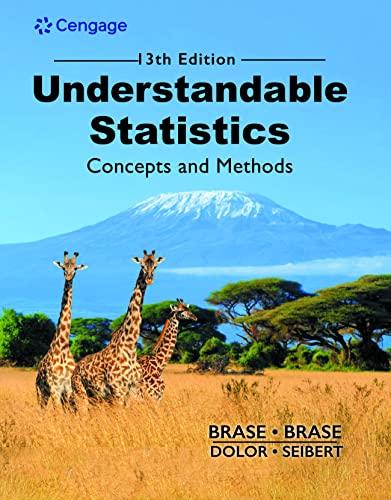Education: Exam Scores Professor Gill has taught general psychology for many years. During the semester, she gives
Question:
Education: Exam Scores Professor Gill has taught general psychology for many years. During the semester, she gives three multiple-choice exams, each worth 100 points. At the end of the course, Dr. Gill gives a comprehensive final worth 200 points.
Let x1, x2, and x3 represent a student’s scores on exams 1, 2, and 3, respectively. Let x4 represent the student’s score on the final exam. Last semester Dr. Gill had 25 students in her class. The student exam scores are shown.
x1 x2 x3 x4 x1 x2 x3 x4 x1 x2 x3 x4 73 80 75 152 79 70 88 164 81 90 93 183 93 88 93 185 69 70 73 141 88 92 86 177 89 91 90 180 70 65 74 141 78 83 77 159 96 98 100 196 93 95 91 184 82 86 90 177 73 66 70 142 79 80 73 152 86 82 89 175 53 46 55 101 70 73 78 148 78 83 85 175 69 74 77 149 93 89 96 192 76 83 71 149 47 56 60 115 78 75 68 147 96 93 95 192 87 79 90 175 Since Professor Gill has not changed the course much from last semester to the present semester, the preceding data should be useful for constructing a regression model that describes this semester as well.
(a) Generate summary statistics, including the mean and standard deviation of each variable. Compute the coefficient of variation (see Section 3.2) for each variable. Relative to its mean, would you say that each exam had about the same spread of scores? Most professors do not wish to give an exam that is extremely easy or extremely hard.
Would you say that all of the exams were about the same level of difficulty? (Consider both means and spread of test scores.)
(b) For each pair of variables, generate the sample correlation coefficient r. Compute the corresponding coefficient of determination r2. Of the three exams 1, 2, and 3, which do you think had the most influence on the final exam 4? Although one exam had more influence on the final exam, did the other two exams still have a lot of influence on the final? Explain each answer.
(c) Perform a regression analysis with x4 as the response variable. Use x1, x2, and x3 as explanatory variables. Look at the coefficient of multiple determination. What percentage of the variation in x4 can be explained by the corresponding variations in x1, x2, and x3 taken together?
(d) Write out the regression equation. Explain how each coefficient can be thought of as a “slope.” If a student were to study “extra hard” for exam 3 and increase his or her score on that exam by 10 points, what corresponding change would you expect on the final exam? (Assume that exams 1 and 2 remain
“fixed” in their scores.)
(e) Test each coefficient in the regression equation to determine if it is zero or not zero. Use level of significance 5%. Why would the outcome of each hypothesis test help us decide whether or not a given variable should be used in the regression equation?
(f) Find a 90% confidence interval for each coefficient.
(g) This semester Susan has scores of 68, 72, and 75 on exams 1, 2, and 3, respectively. Make a prediction for Susan’s score on the final exam and find a 90% confidence interval for your prediction
(if your software supports prediction intervals).
Problems 3–6, use appropriate multiple regression software of your choice and enter the data. Note that the data are also available for download at the Companion Sites for this text.AppendixLO1
Step by Step Answer:

Understandable Statistics Concepts And Methods
ISBN: 9780357719176
13th Edition
Authors: Charles Henry Brase, Corrinne Pellillo Brase





